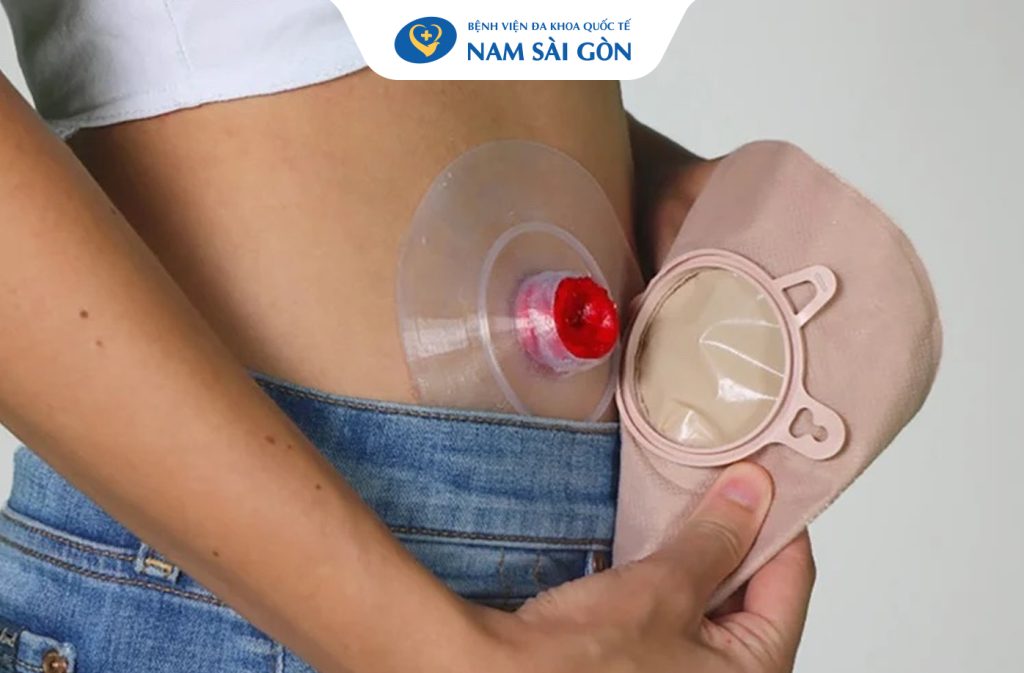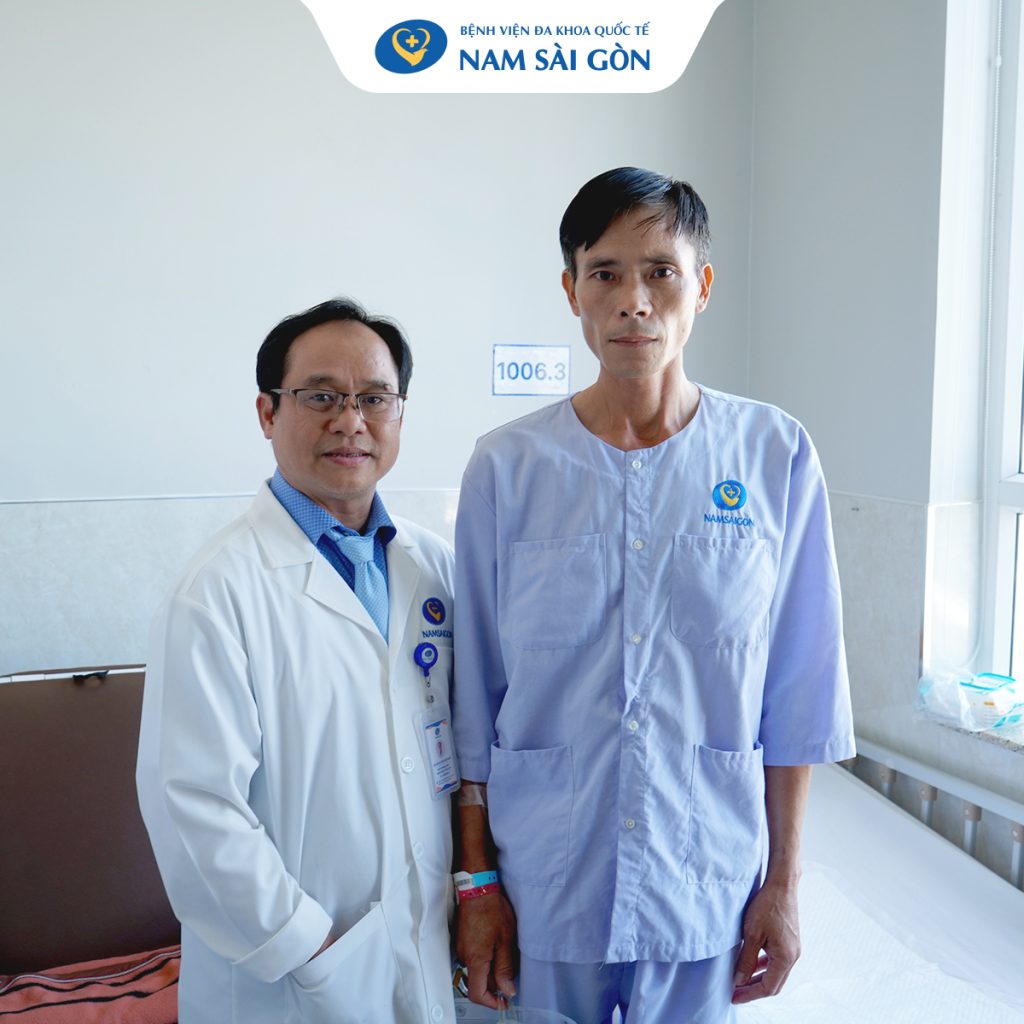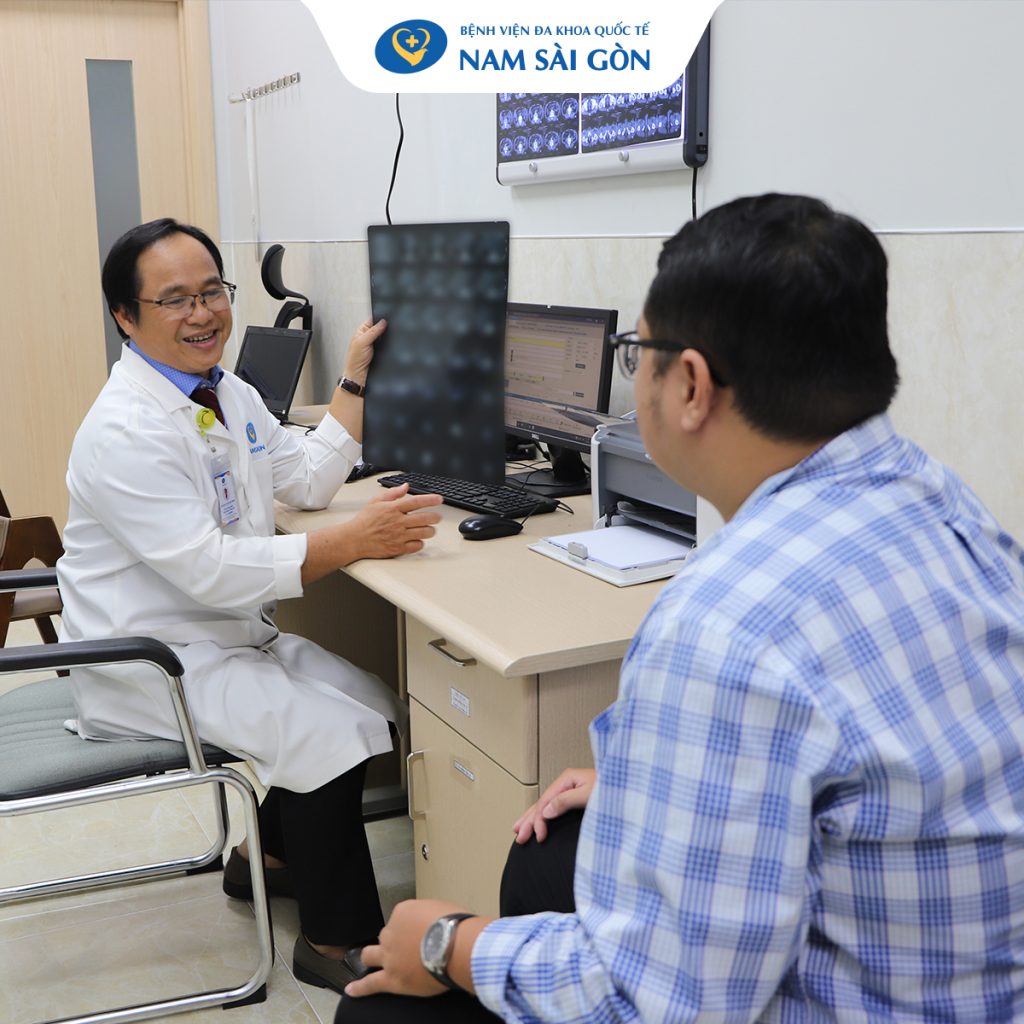BLADDER RECONSTRUCTION USING SMALL INTESTINE: IMPROVING QUALITY OF LIFE FOR BLADDER CANCER PATIENTS
-
Author: BỆNH VIỆN ĐA KHOA QUỐC TẾ NAM SÀI GÒN
-
21/05/2024
-
1,031
Thanks to advancements in modern medicine, many bladder cancer patients can now be effectively treated through laparoscopic radical cystectomy followed by neobladder reconstruction. This is a highly specialized and complex urological procedure that not only removes the cancer completely but also helps restore quality of life.
According to Dr. Le Van Hieu Nhan, Specialist Level II – Deputy Head of General Surgery and Head of Urology at Nam Sai Gon International General Hospital, bladder cancer often progresses silently. It is typically detected during examinations for symptoms such as blood in the urine, urgency, urinary retention, frequent urination, or painful urination. While early-stage bladder cancer is highly treatable with good prognosis, some patients delay seeking care due to embarrassment or underestimating their symptoms, leading to late diagnosis and more complicated treatment.

Treatment for bladder cancer depends on the disease stage, the extent of invasion, and the patient’s overall health.
In early stages, when the tumor is confined to the bladder’s inner lining and has not invaded the muscle layer, treatment may be as simple as endoscopic surgery. In more advanced stages, however, bladder removal may be necessary. Therefore, early intervention when the tumor has not yet spread allows for more conservative treatment and better long-term outcomes.
Bladder removal and neobladder reconstruction using the small intestine
Radical cystectomy with neobladder reconstruction involves two main stages: removing the bladder, and creating a new bladder using a segment of the intestine. This complex procedure includes removal of the entire bladder along with the prostate and seminal vesicles in men, or the uterus and part of the vaginal wall in women. A new bladder (neobladder) is constructed from a section of the small intestine and connected to the ureters and urethra. The reconstructed bladder remains in the original anatomical location and functions similarly to a natural bladder. The reconstruction stage, in particular, presents significant challenges — even for experienced surgeons.
Currently, surgery remains the preferred treatment for early-stage bladder cancer. If the tumor is small, it can often be removed via transurethral resection while preserving the bladder. However, complete bladder removal and reconstruction can reduce recurrence rates and improve survival.

This technique offers significant advantages. Patients avoid complications such as bleeding or infection from prolonged catheter use. More importantly, they can urinate naturally without needing to wear an external urine bag for life, which can significantly affect social interactions and daily living. Moreover, because this approach aims to completely remove the cancer, it helps minimize the risk of recurrence compared to traditional tumor resections.
Case Highlight: Restoring dignity and independence through neobladder surgery
Mr. N.H.C. (38 years old, Kien Giang Province) was diagnosed with malignant bladder cancer and had undergone bladder removal with bilateral ureterostomy two years ago. However, being a young man, wearing an external urine bag every day posed considerable difficulties in both work and daily life. Hoping to avoid wearing a urine bag for the rest of his life, he sought care at Nam Sai Gon International General Hospital to undergo neobladder reconstruction using intestinal tissue. This complex urological procedure has been successfully performed at the hospital for several years.

The surgical team — comprising Dr. Le Van Hieu Nhan, Specialist Level II; Dr. Nguyen Trung Duong, MMed, Specialist Level I; Dr. Quach Tuan Khang; and Dr. Pham Truong Minh — performed the surgery over the course of eight hours. A segment of the small intestine was used to create a new bladder, which was then reconnected to the ureters and urethra. This advanced technique requires meticulous coordination and precision by a highly trained surgical team from both the Urology and General Surgery departments to ensure that the newly constructed bladder functions properly.

The surgery was successful. Mr. C.’s new bladder allowed for normal urine flow. Within one week post-op, he was recovering well — eating, moving, and urinating naturally, no longer requiring a stoma or external collection bag.

Dr. Le Van Hieu Nhan, Specialist Level II emphasized that one of the most important symptoms to watch for in detecting bladder cancer is recurrent hematuria (blood in the urine). When unusual urinary symptoms such as hematuria, dysuria, or increased frequency occur, individuals should visit a healthcare facility for screening and timely treatment. Even patients who have already undergone surgery should have regular check-ups to detect possible recurrence.
Nam Sai Gon International General Hospital accepts both public health insurance and private health insurance.
Nam Sai Gon International General Hospital
No. 88, Street No. 8, Trung Son Residential Area, Binh Hung Commune, Ho Chi Minh City.
Hotline: 18006767
info@nih.com.vn
Last updated: 14:55 20/11/2025






